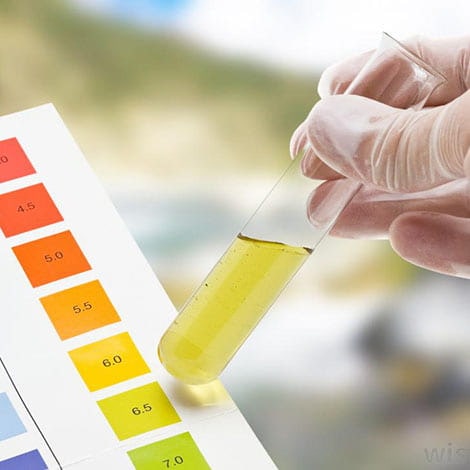Your pond's pH – or potential hydrogen – level is an important measurement to understand because it affects the wellness of fish and other aquatic life in the water. If the pH of pond water is too high or too low, it can impact the ability of fish to reproduce, fight disease, and metabolize food. It can also impact the well-being of other living things in your pond, like plants, amphibians, and more.
A pH test, like the one found in the Pond Care Master Test Kit or one of our other pond test kits, can reveal a lot about your outdoor space. But what does a high or low pH reading mean? Should you adjust its level or just leave it alone? Read on to learn more about a koi pond's pH level and how to lower pH in a pond.
What Does Pond pH (Potential Hydrogen) Mean?
In simple terms, pH is a measure of how acidic or alkaline (basic) a water body is on a scale from 0 to 14. Pure water is neutral. It has a pH close to 7.0 at 77°F . Blood is also close to neutral. Ammonia's pH is around 11, which is high on the alkaline charts, while stomach acid's pH is around 1, making it a key part of digestion. But what does this mean for your pond?
Adjusting to a Proper pH Level
You don't have to keep your pond at a perfect 7.0 pH all the time. In fact, the best pH for koi and other backyard water gardens is 6.5 – 8.5, so if your score falls in this range you don't need to make any changes at all. A number outside this range in either direction means you have high pH levels in your pond water (acidic or basic), and you will need to make some adjustments. Here's how to lower pH in a pond:
- Partial Water Change: Replacing some of your pond water with fresh water is one way to lower pH in a pond naturally. Remember to treat water with a conditioner, like The Pond Guy Stress Reducer Plus, to remove impurities and heavy metals that could be harmful to your fish.
- Use pH Reducer: Another option is to adjust your pH using a pond pH stabilizer. Apply enough treatment to shift the levels 0.5 at a time, wait several hours before re-treating, and test the water often with your pH Test Kit.
- Test Your Tap Water: Try testing your tap water, especially if you're on a well. If the pH is high from your well, your pond will likely stay around that level and it will be more difficult to treat it.
- Use Clarity Defense: A pond clarifier like Clarity Defense can help to add trace minerals while buffering pH to promote stable levels and prevent swings. Plus, it clears cloudy water by locking up excess nutrients and allowing your filter to remove them.
Next Steps
Now that you know how to lower pH in a pond, apply those techniques in your own outdoor space to help promote a good environment for fish and plants. If you need help testing or adjusting the pH of your pond water, call or reach out to our customer service team for help.
Last Updated: February 2, 2023
